Choosing beautiful Namibia as your luxury safari destination will give you some unparalleled opportunities to experience this country of extreme contrasts. It’s unimaginably vast, with a red-dune desert visible from space and long stretches of untouched coastline. If you head all the way to the north, you can experience some of the best wildlife viewing in southern Africa.
There’s a wealth of things to do in Namibia. It’s a prime destination for adventure and nature enthusiasts alike, but there’s also enough luxury to satisfy all your pampering needs. If you’re looking for solitude, sightseeing, and an uninterrupted connection with nature, check out the best places to visit during your Namibia luxury safari.
1. Explore the Skeleton Coast
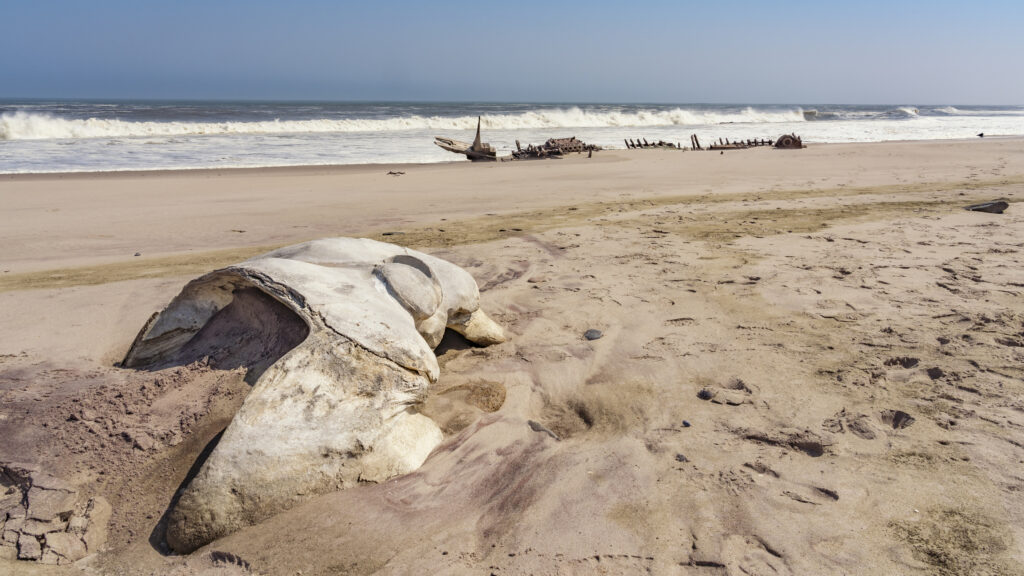
The Skeleton Coast is known for its ecologically vital sea-mists, vast number of shipwrecks, and hauntingly beautiful and evocative landscapes. There are numerous activities to keep you busy, including fishing, boating excursions on the Kunene River, hiking the Ugab River trail, and 4×4 dune safaris. Scenic flights are also a great way to appreciate the beauty of this coastal area.
Dolphins, orcas, as well as humpback and southern right whales all frequent the Atlantic coast, while a visit to the Cape Cross seal colony is an unmissable experience. The area also boasts desert-adapted elephants and lions, rhinos, brown hyenas, jackals, oryx, kudus, and Hartman’s zebras.
Some of the unique plant species that thrive here include the miraculous welwitschias, Nara melons, “living stones” (lithops), lichen, and the ink bush. There’s a wide range of accommodation on offer throughout Namibia, including numerous luxury lodges and camps.
Interesting Fact: Lions on the beach? Indeed! Namibia’s desert lions have learned to hunt seals and seabirds and feed on whale carcasses as part of their desert-adapted survival strategies.
2. Visit the Ghost Town of Kolmanskop

Kolmanskop’s fascinating history makes it a notable tourist attraction in Namibia, with about 35,000 people visiting annually. Once a prosperous diamond mining town, it now stands completely abandoned in the desert, with most of the remaining buildings half-buried in the sand.
Visitors can explore the deserted buildings and structures, which make for some incredible photo opportunities. It’s also an excellent spot for history enthusiasts, many of whom are drawn to its blend of German architecture and desert landscapes.
Luderitz is just a short drive away. Here, you can enjoy world-class luxury accommodation in a coastal setting and embark on whale watching expeditions from the harbour.
Interesting Facts: In its heyday, Kolmanskop had a casino, ballroom, theatre, bakery, hospital, and school. Fresh water was brought in by train!
3. Explore Namibia’s Wetlands in a Mokoro
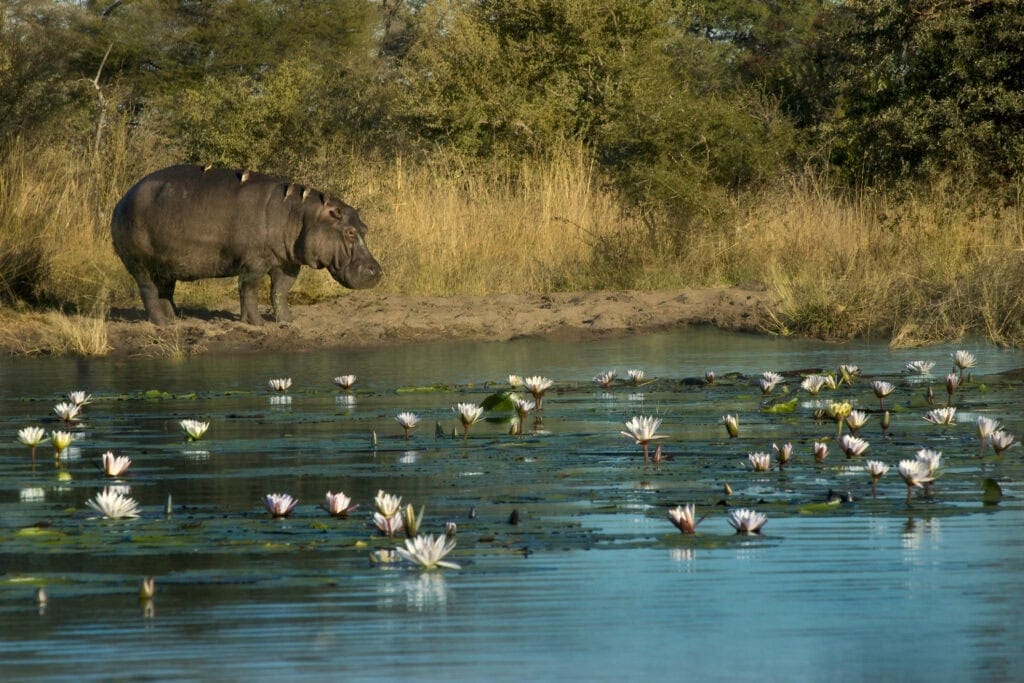
Namibia’s wetlands are a paradise for nature lovers, birders, and photographers. The Caprivi Strip region, in particular, abounds with swamps, woodlands, savannahs, and floodplains, where you can spot wildlife like elephants, lions, wild dogs, leopards, antelopes, buffalos, and hippos.
Being poled gently through the water-lilies in a mokoro, a traditional dugout canoe, is the perfect way to explore this lush habitat. Visitors can get a close-up look at an impressive diversity of birdlife and aquatic animals. It’s a marvellously serene experience that offers close encounters with some of nature’s giants.
Interesting Fact: Traditionally made from ebony and sausage tree trunks, mokoros are increasingly being made from fibreglass these days, which is reducing the impact on these beautiful indigenous trees.
4. Visit the Cheetah Conservation Fund Centre
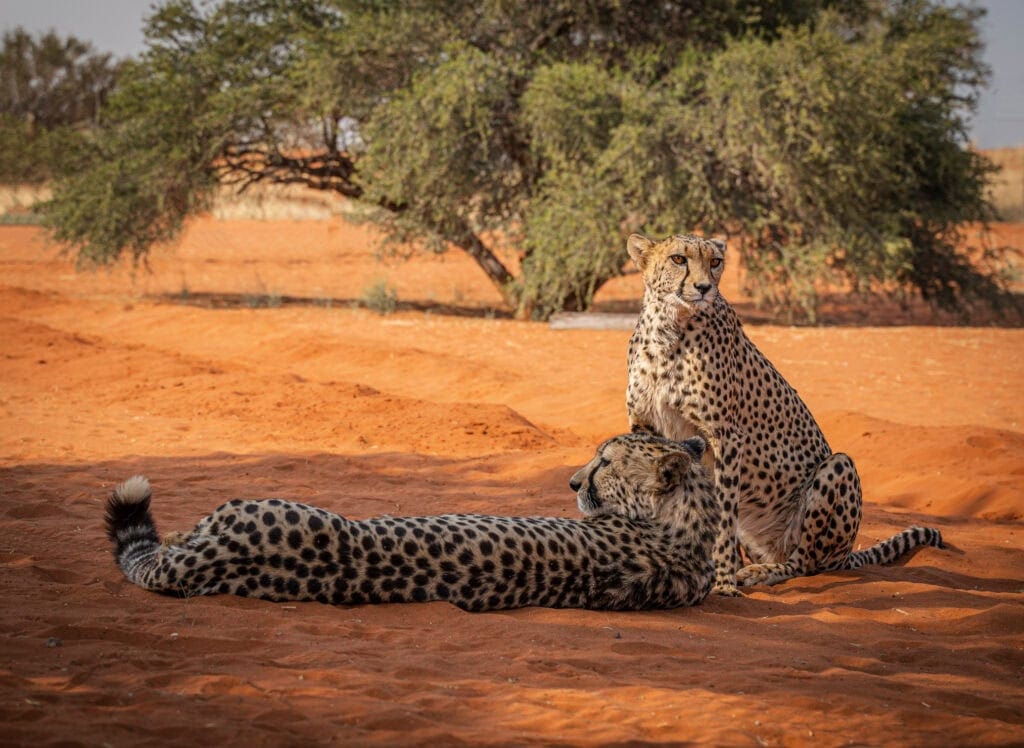
The Cheetah Conservation Fund is a lifeline for this iconic and vulnerable species. Founded in 1990, the research and education centre is situated in Otjiwarongo, Namibia, welcoming visitors to come and learn about its conservation efforts and see cheetahs being rehabilitated before being released into the wild. One of its most successful initiatives has been the Anatolian shepherd and Kangal dogs livestock guarding dog programme.
Interesting Fact: Is the beautiful king cheetah a subspecies? No, though it was once thought to be. Its striped extra thick coat, colour variations, and bold patterns are due to a recessive gene that manifests from time to time!
5. Visit Sossusvlei
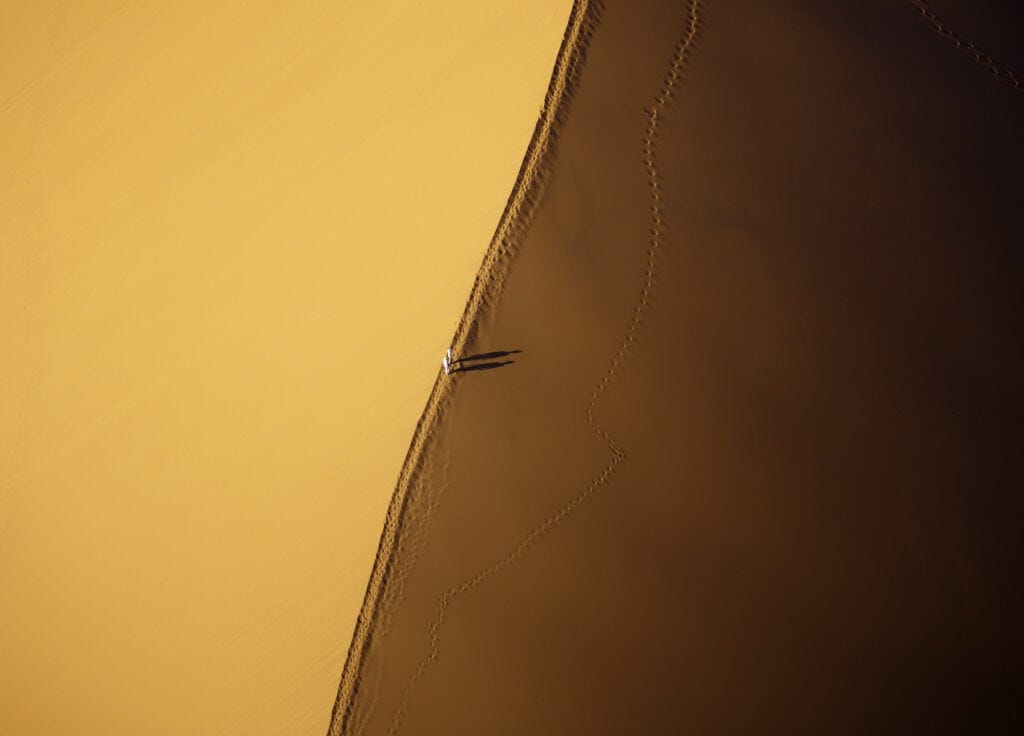
Otherworldly Sossusvlei is famous for some of the highest sand dunes in the world. It’s an unmissable stop on every tourist’s itinerary. Visitors can climb Dune 45 or Big Daddy for breathtaking views, especially at sunrise or sunset.
Nearby Deadvlei, with its ancient, petrified trees, is a stunning sight highly prized by photographers. Other activities in the area include hot-air balloon trips at dawn over the desert, hiking in Sesriem Canyon, and wildlife viewing of iconic animals like ostriches and the magnificent gemsbok (oryx).
Interesting Facts: The distinctive colour of the Sossusvlei sand is due to its iron oxide content. The tallest dune here is Big Daddy, which looms 325 metres (1,066 feet) high!
6. Visit Kaokoland
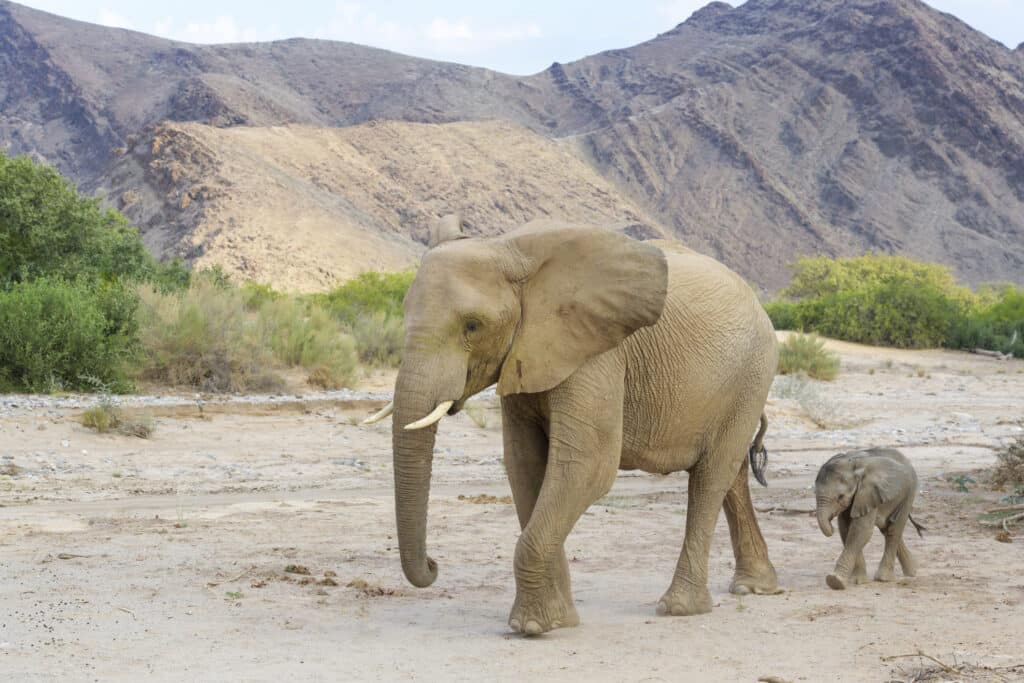
Located in the remote northwest, Kaokoland is known for its rugged landscapes and colourful waterfalls. It’s home to the Himba people, famous for their ochre-pasted skin, intricate hairstyles, and dedication to their traditional way of life. Dramatic granite outcrops and age-old baobab trees characterise the landscape that the mighty Kunene River flows through.
The region’s crown jewel is Epupa Falls, which transforms the arid landscape into a lush oasis teeming with life. Wildlife species seen here include desert-adapted elephants, endangered black rhinos, and birds like the endemic Rüppell’s korhaan. Activities here include wildlife safaris, guided game drives or walks, hiking, camping, boat cruises, and canoeing. It’s also a great place for off-road driving and trekking.
Interesting Facts: “Epupa” means “falling water” in the language of the local Ovahimba. In Angola these falls are known as the Monte Negro Falls.
7. Explore the Fish River Canyon
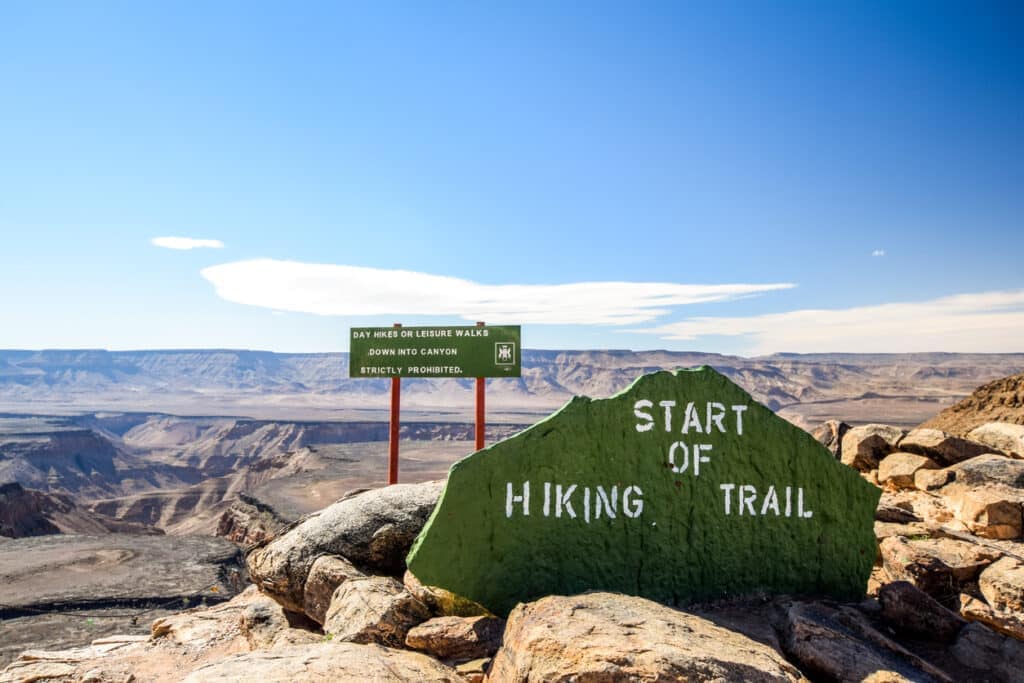
Namibia’s Fish River Canyon is a spectacular natural wonder by any standards. Its immense size and meandering paths offer stunning views and instil a sense of awe in even the most blasé of travellers. Experienced hiking enthusiasts can take on the multi-day Fish River Canyon Hike. Other activities include cycling, trekking, trail running, visiting the Ai-Ais hot springs, photography, birdwatching, and game drives.
Leopards, baboons, zebras, kudus, African fish eagles and Verreaux’s eagles call the canyon home, and after sunset, you can take in one of the most incredible star shows on the planet.
Interesting Fact: The Fish River Canyon is the second biggest canyon in the world. Only the Grand Canyon in the USA is bigger.
8. Visit Okonjima Nature Reserve
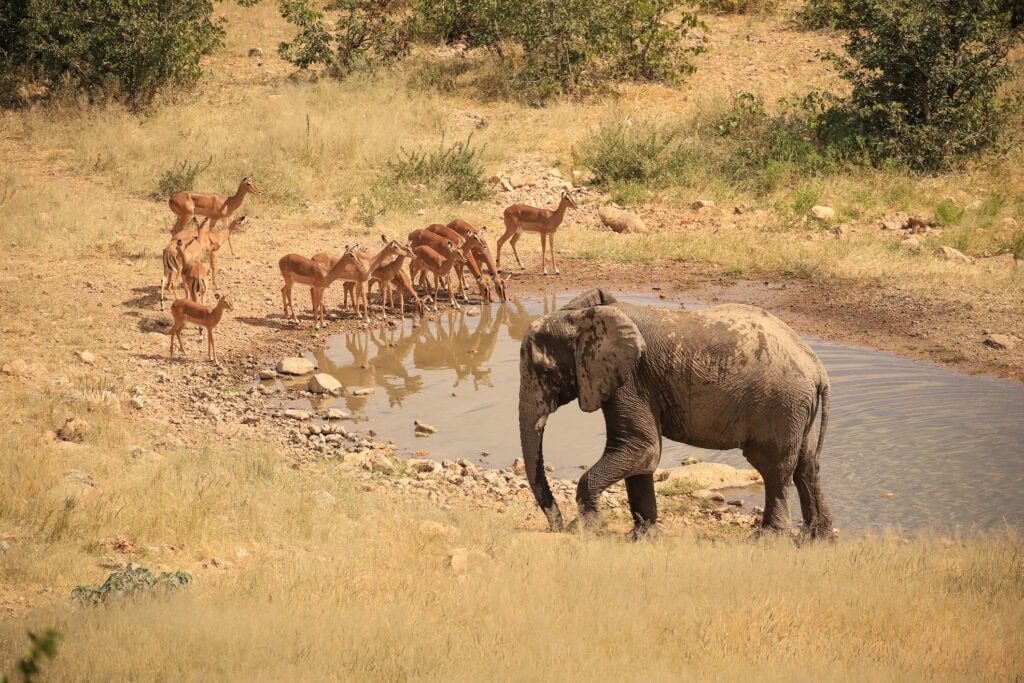
Famous as the home of the AfriCat Foundation, the Okonjima Nature Reserve is located close to northern Namibia’s Waterberg Plateau. AfriCat is dedicated to the conservation and rehabilitation of Namibia’s big cats, especially leopards and cheetahs, which roam freely on the reserve.
Visitors can enjoy guided walks and game drives to see just some of the magnificent wildlife in Namibia. The reserve also offers luxurious accommodation, combining comfort and wildlife adventure.
Interesting Fact: Apart from leopards and cheetahs, visitors to Okonjima often have the opportunity to observe rare brown hyenas and pangolins.
9. Visit Duwisib Castle

Mediaeval fortress or a desert mirage? No, Duwisib Castle is quite real, and it originated in a love story. It’s situated about 70 km from the small town of Maltahöhe on the D826 road from Sesriem to Helmeringhausen. The castle was built by a German Officer, Baron Hansheinrich von Wolf, in the early 1900s for his beautiful American bride, Jayta. He died in 1916 in France during World War I, after which the property fell into disrepair.
In 1978, the Namibian government bought the castle and renovated it. Today, it’s a museum and an intriguing landmark in the stark Namibian landscape. It’s a good stop-over point during the journey to southern Namibia and Sossusvlei, Lüderitz, and the Fish River Canyon.
Interesting Fact: The famous feral horses of the Namib are believed to possibly be descendants of the baron’s stud.
10. Explore Okahandja

Okahandja is one of the Herero nation’s most important centres, situated about 70 km north of Windhoek on the B1. It’s often referred to as the “Garden Town” as a result of its lush greenery, offering visitors a peaceful retreat from the scorching desert.
Everyone travelling to the north of Namibia or Swakopmund should take the opportunity to drive through it. Okahandja’s wood carving market is a famous highlight and showcases the skills of local craftsmen. Here, you can buy handcrafted items like traditional masks and intricate animal carvings.
For nature, birding, and watersports lovers, the Von Bach Dam is a must-visit. The thermal springs of Gross Barmen spa resort are also a sought-after destination.
Interesting Fact: A traditional Herero Day, notable for the colourful outfits and head dresses of the women, is famously celebrated here every year on 26 August.
At Discover Africa, we know that Namibia has a wealth of diverse experiences to please every traveller. It’s a land of wonder, contrasts, and adventure, with a rich history and amazing natural marvels and wildlife.
Author: Matthys Van Aswegen
Published:
Last Update:
Part of the Namibia Safaris Safari & Desert Safaris Collections